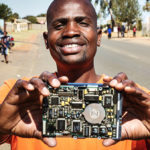This blog was originally posted on the Huffington Post
We are now witnessing children’s health care expanding across the nation with advancements in video-based networking and collaborative technologies. A virtual visit by a renowned pediatric specialist at your local clinic is now becoming a reality in a growing number of communities.
As one in five children in the U.S. seek specialist medical care this year, ready availability of pediatric sub-specialists is critical for our children’s health and healthy communities. These specialists are in short supply, however, and tend to be clustered in the major metropolitan cities. Wait times for initial appointments can range from three to nine months. According to Time Magazine, 15 million children live in rural enclaves where the ratio of pediatricians and family physicians is 22 for every 100,000 kids. That’s a patient load of more than 4,500 children per doctor. Outside the U.S., those numbers drastically increase.
Today, telehealth pilot programs with a video interface from a medical specialty facility to a local clinic are vastly improving access to pediatric specialty care. With no travel to the big city to see a specialist and no associated travel costs, families reduce time lost at work and school to receive care for their children.

With October dedicated to National Children’s Health, I thought it fitting to speak about these emerging technologies that are advancing medical care for children around the globe. Leading governmental health organizations in the country are encouraging parents, teachers, caregivers, and health providers to focus on children’s health issues and promote healthy environments for our nation’s children. By combining human and technology networks involving mobile, cloud, and video technologies, we are witnessing improvements to access of quick, reliable health care for children in many communities.
Today, telehealth programs are being piloted around the country. At one of the world’s renowned children’s hospitals, Lucile Packard Children’s Hospital in Palo Alto, Calif., Cisco HealthPresence is being used to provide high-definition real-time video consultations and post-surgical follow-up with children several hours drive away. Dr. William Kennedy, a pediatric urologist, and early adopter of real-time video consultations, at Packard Children’s used to drive two hours, each way, to remote clinics for consultations with young patients. Today, he spends that travel time seeing more patients and collaborating with attendant nurse practitioners at the local clinics. Dr. Kennedy believes “we are at the forefront of a health care revolution that will provide essential access to pediatric specialist care for every needy child in the U.S. within a timely, ease of service model.”
While virtual doctor’s visits cannot be a panacea to improve all health-related issues, it can help relieve the burden of healthcare accessibility.
- For Doctors — reduced travel means they can see more patients each day. They can connect and collaborate with other specialists to review cases, make referrals and share medical knowledge.
- For Children — seen in their own communities with reduced time out of school. Often, this tech-savvy generation of children is comfortable interacting with a remote doctor on a screen aided by a local clinician.
- For Parents — less travel or time off work to visit specialists reduces the cost and stress of traveling for medical care.
There are other remote consultation specialist programs around the U.S. using emerging technologies with encouraging results. The Marcus Autism Center, part of Georgia’s Children’s Healthcare of Atlanta, is partnering with Cisco on an innovative pilot using video-based technology for early assessment and to consult about treatment of children with autism. Early evidence is promising based on treatment of over 1,000 children. Those involved in the pilot point to research that indicates that the first two years of life are key for early intervention with autism. The autism spectrum disorder affects about 1 in 88 children nationwide, according to the Centers for Disease Control and Prevention’s ADDM Network. The hope is that more patients begin video treatment early after diagnosis for a positive difference.
Our Connected Healthy Children initiative is helping health care facilities make better use of scarce resources, help support personalized treatments, and build children’s health care capacity on a global scale. Healthy children develop healthy communities, which in turn support a community’s economic well-being. Each day, advances are made in technologies and partnerships are flourishing to ensure those technologies are being used to improve the quality and accessibility of healthcare and as a means to help improve the quality of life for children everywhere.
This month, let us think about supporting healthy children in all communities and seek out ways to inform and inspire each other to ensure our children’s wellbeing.


CONNECT WITH US